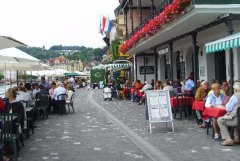Coffee carbon that you don't know.
It is understood that at present, China's annual coffee consumption is about 30-35000 tons, and in 2012, China's coffee consumption increased by 10% compared with the same period last year. Based on the annual consumption of more than 30,000 tons of coffee, the coffee grounds produced are considerable. Bamboo charcoal fiber and coconut carbon fiber have come into our lives, so can these coffee grounds also turn waste into treasure, reduce the burden on our environment, and produce a large number of high-quality raw materials at the same time? If so, the coffee in our hands must feel more mellow and delicious. The answer is yes. Coffee carbon fiber has been developed and applied.

First of all, coffee carbon fiber has its own unique advantages. the porous structure of coffee carbon fiber has high adsorption, which can destroy the moist environment of bacteria. Tannin in coffee carbon can coagulate the protoplasm of microorganisms and act on a variety of enzymes, which has obvious inhibitory effect on a variety of bacteria, such as Escherichia coli, Staphylococcus aureus and so on. After carbonization, coffee grounds become a special porous structure, which has the natural effect of far-infrared, heat storage and warmth without adding any chemical additives. Therefore, the "natural beauty" coffee carbon fiber already has a certain bacteriostatic function without post-treatment and auxiliaries, and the fabric made of coffee carbon fiber also has natural functions such as quick drying, deodorization, bacteriostasis, anti-ultraviolet and far-infrared. It is precisely because of these characteristics that coffee carbon itself does not require post-treatment, reduces the use of auxiliaries, and has a long-lasting effect. It is obvious that its products will bring higher security to users.
Secondly, the processing process of recycled coffee grounds is also more energy-saving. Coffee carbon is carbonized at low temperature and processed at 680 ℃, while bamboo charcoal and coconut charcoal are processed at 950 ℃ and 1200 ℃ respectively, so the production of coffee carbon can greatly reduce water and electricity consumption and carbon dioxide emissions. Coffee carbon yarn manufacturing process, adhering to the principle of complete environmental protection, without high-temperature carbonization, will not produce a large amount of carbon dioxide.
When exercise has become necessary for people's quality of life, environmental protection and green has gradually been recognized as a healthy way of life. When choosing clothing products, more people will consider whether the products are environmentally friendly or not. The recycling of coffee carbon is becoming a great blessing for the clothing industry. The development and utilization of coffee carbon in Li Ning clothing products has come into people's daily life. Maybe everyone will go out wearing coffee carbon in the future.
Important Notice :
前街咖啡 FrontStreet Coffee has moved to new addredd:
FrontStreet Coffee Address: 315,Donghua East Road,GuangZhou
Tel:020 38364473
- Prev

Death Cafe
Many people may talk about life and other easy things when they get together with friends in a cafe, but in a cafe in Brisbane, guests have something different to talk about: death.
- Next

85 degrees C expect a second upgrade
Xie Jiannan, chief executive of 85C, said that 85C is the chain store that sells the largest number of coffee in Taiwan besides convenience stores.
Related
- What is the standard process for the purpose of coffee cup testing? What is the difference between hand-brewed coffee and cup testing?
- How to use hand-brewed coffee paragon small golden balls? How does cold coffee lock in the aroma of coffee?
- Is American coffee black? What is the difference between American coffee and drip coffee?
- Unexpected! Well-known tea beverage brand Lele Tea will withdraw from the Zhengzhou market!
- Starbucks enters the fashion and beauty industry?! Netizen: Give me an ice American eye cream
- Why can American refills for free? The difference between Americano and American drip pot coffee
- Being chased out of the rain in front of Starbucks?! Store: Sheltering from rain under umbrellas poses a safety hazard
- The white moonlight has changed?! Lucky launches "Big Winter Pear American"
- Hand-brewed coffee three-stage method, high-sweet and universal brewing method to share! What does the high sweet water level of hand-brewed coffee mean?
- What is the difference between raw, refined and full espresso coffee? How to extract espresso and taste good?

